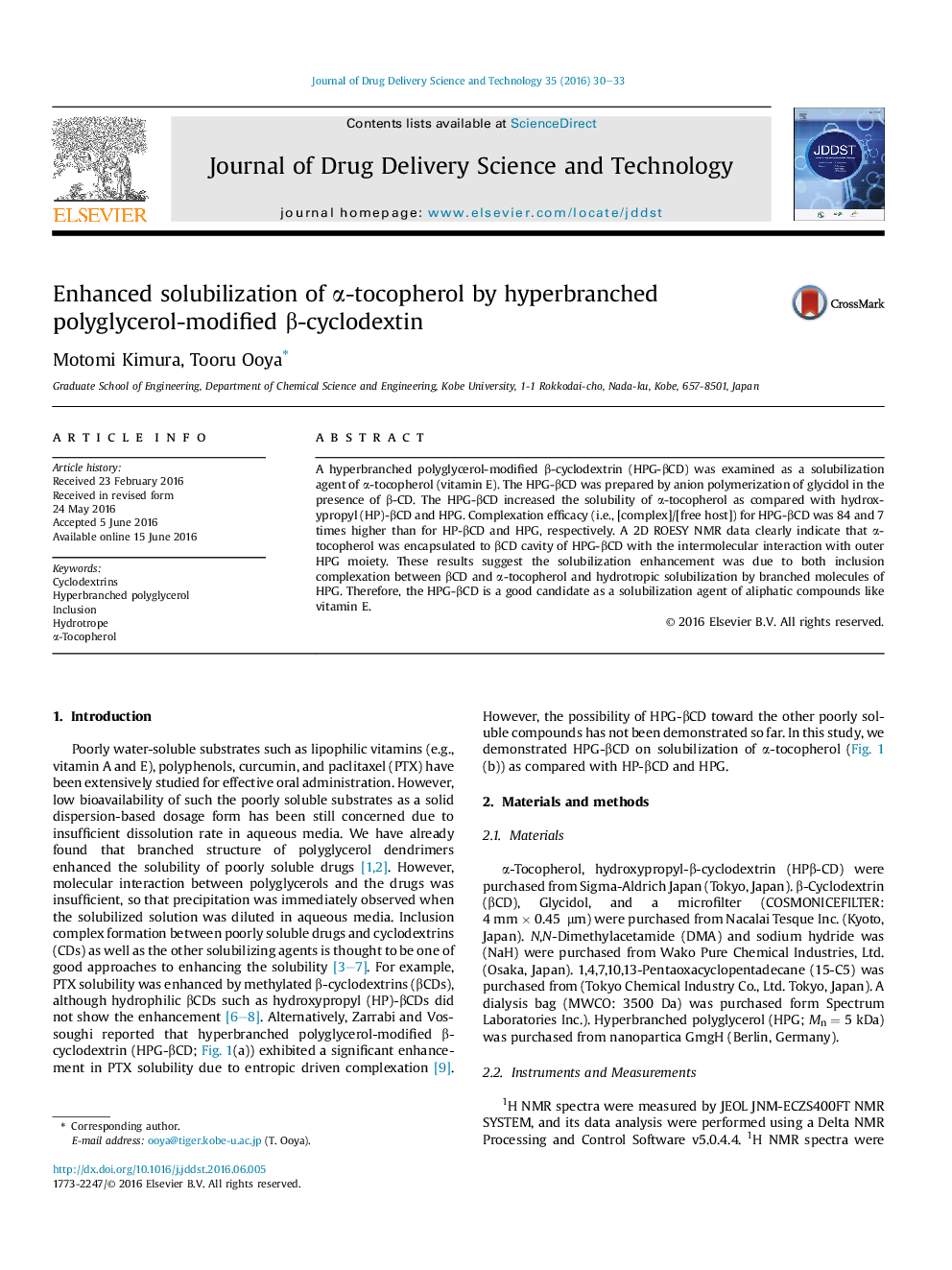| Article ID | Journal | Published Year | Pages | File Type |
|---|---|---|---|---|
| 2483021 | Journal of Drug Delivery Science and Technology | 2016 | 4 Pages |
A hyperbranched polyglycerol-modified β-cyclodextrin (HPG-βCD) was examined as a solubilization agent of α-tocopherol (vitamin E). The HPG-βCD was prepared by anion polymerization of glycidol in the presence of β-CD. The HPG-βCD increased the solubility of α-tocopherol as compared with hydroxypropyl (HP)-βCD and HPG. Complexation efficacy (i.e., [complex]/[free host]) for HPG-βCD was 84 and 7 times higher than for HP-βCD and HPG, respectively. A 2D ROESY NMR data clearly indicate that α-tocopherol was encapsulated to βCD cavity of HPG-βCD with the intermolecular interaction with outer HPG moiety. These results suggest the solubilization enhancement was due to both inclusion complexation between βCD and α-tocopherol and hydrotropic solubilization by branched molecules of HPG. Therefore, the HPG-βCD is a good candidate as a solubilization agent of aliphatic compounds like vitamin E.
Graphical abstractFigure optionsDownload full-size imageDownload as PowerPoint slide
